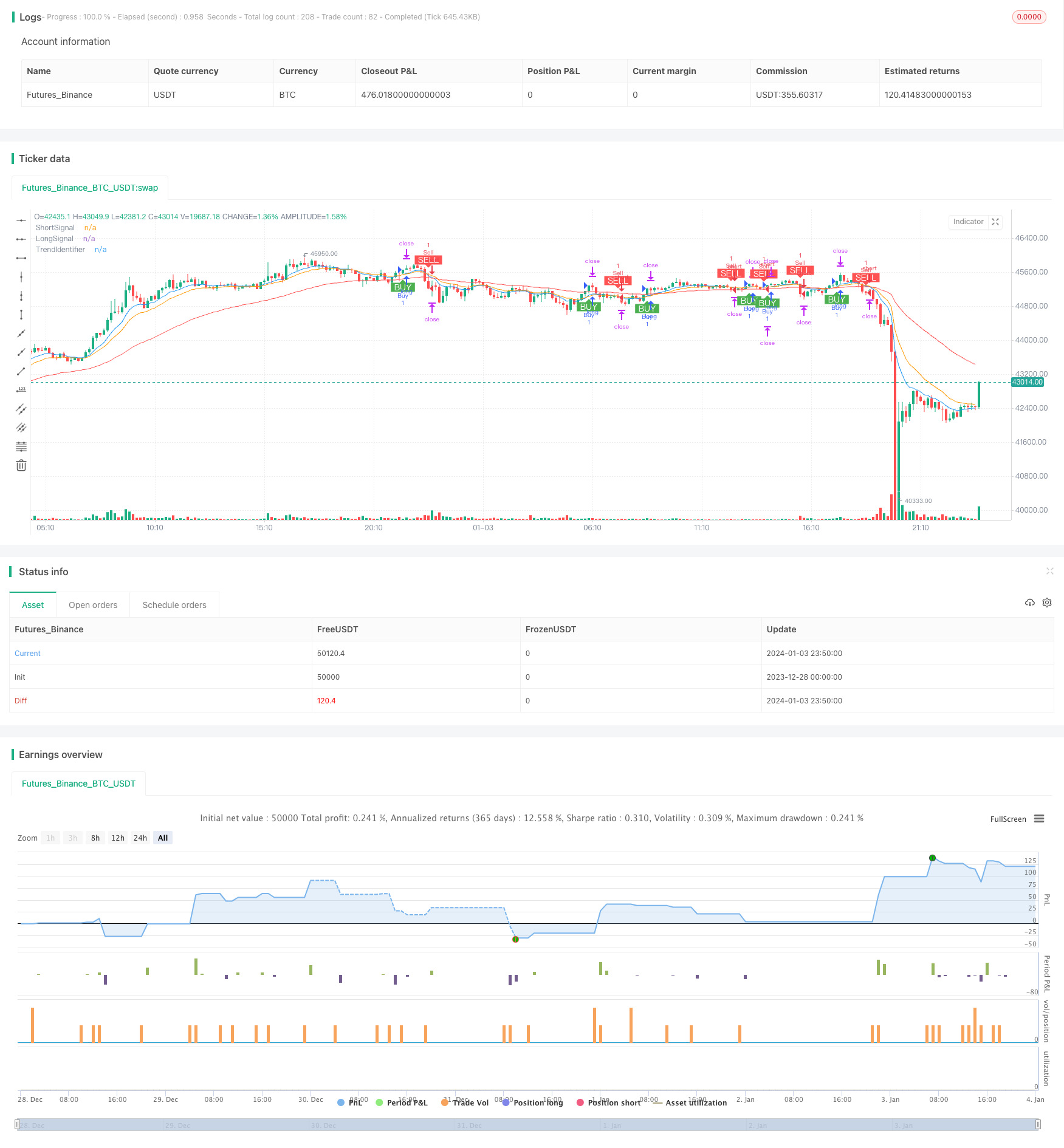
概述
本策略名为“基于EMA均线交叉的短期量化交易策略”。该策略运用9日线、15日线与50日线的EMA均线交叉原理,在1分钟到5分钟的短期时间周期内进行交易,以捕捉短期价格趋势,实现快速进入和退出。
策略原理
该策略使用9日EMA均线、15日EMA均线和50日EMA均线。9日EMA均线和15日EMA均线的交叉用于生成买入和卖出信号。当9日EMA均线上穿15日EMA均线时,产生买入信号;当9日EMA均线下穿15日EMA均线时,产生卖出信号。50日EMA均线用于判断整体趋势方向,只有在价格高于50日EMA均线时才会产生买入信号,只有在价格低于50日EMA均线时才会产生卖出信号。
通过快速EMA均线的交叉以及长期EMA均线的支持,可以捕捉短期价格移动的同时避免逆势操作。 Tak两个短周期均线交叉可确保及时捕捉近期价格变动; 长周期均线可有效过滤震荡局面,避免头痛医头、脚痛医脚。
策略优势
捕捉短期价格趋势:通过两个快速EMA均线的交叉,可以快速捕捉短期价格的变动,实现快进快出。
过滤震荡:通过长EMA均线判断整体趋势方向,有效防止逆势操作,避免不必要的止损。
参数可调:用户可以根据自己的需要调整EMA均线的周期参数,适应不同的市场环境。
易于入门:相对简单的均线交叉思路,容易理解使用。
策略风险
过于灵敏:两个短周期EMA均线过于灵敏,可能产生大量的错误信号。
忽略长期趋势:长EMA均线无法完全过滤震荡,依然存在一定概率的逆势操作风险。
参数依赖:优化的参数组合依赖于历史数据,无法保证对未来数据同样适用。
止损位置不佳:固定的止损点难以把握,可能过于宽松或过于激进。
策略优化方向
加入 stochastic指标 过滤信号,使用KDJ指标的超买超卖信号辅助EMA均线交叉信号。
增加自适应止损机制,根据市场波动程度智能调整止损点。
增加参数优化模块,通过遗传算法不断迭代寻找最优参数组合。
加入机器学习模型判断趋势和信号准确性,提高策略的稳定性。
总结
本策略通过两个快速EMA均线的交叉产生交易信号,并用一个长周期EMA均线判断整体趋势,目标捕捉短期价格移动。这种短线策略易于理解使用,但也存在一定弊端,如产生过多错误信号、忽略长期趋势等。这些问题都需要通过添加辅助指标、自适应机制和参数优化等方式加以改进,使策略在实盘中更稳定可靠。
/*backtest
start: 2023-12-28 00:00:00
end: 2024-01-04 00:00:00
period: 10m
basePeriod: 1m
exchanges: [{"eid":"Futures_Binance","currency":"BTC_USDT"}]
*/
//@version=4
strategy("EMA Crossover Strategy", overlay=true)
// Define the EMAs
shortEma = ema(close, 9)
mediumEma = ema(close, 15)
longEma = ema(close, 50)
// Plot EMAs
plot(shortEma, title="ShortSignal", color=color.blue)
plot(mediumEma, title="LongSignal", color=color.orange)
plot(longEma, title="TrendIdentifier", color=color.red)
// Define the crossover conditions
buyCondition = crossover(shortEma, mediumEma) and close > longEma
sellCondition = crossunder(shortEma, mediumEma) and close < longEma
// Plot labels for crossovers with black text color
plotshape(series=buyCondition, title="Buy Signal", location=location.belowbar, color=color.green, style=shape.labelup, text="BUY", textcolor=color.white)
plotshape(series=sellCondition, title="Sell Signal", location=location.abovebar, color=color.red, style=shape.labeldown, text="SELL", textcolor=color.white)
// Define the strategy conditions
if (buyCondition)
strategy.entry("Buy", strategy.long)
strategy.exit("Take Profit", "Buy")
if (sellCondition)
strategy.entry("Sell", strategy.short)
strategy.exit("Take Profit", "Sell")
// Run the strategy
strategy.exit("TP/SL", profit=1, loss=0.5)